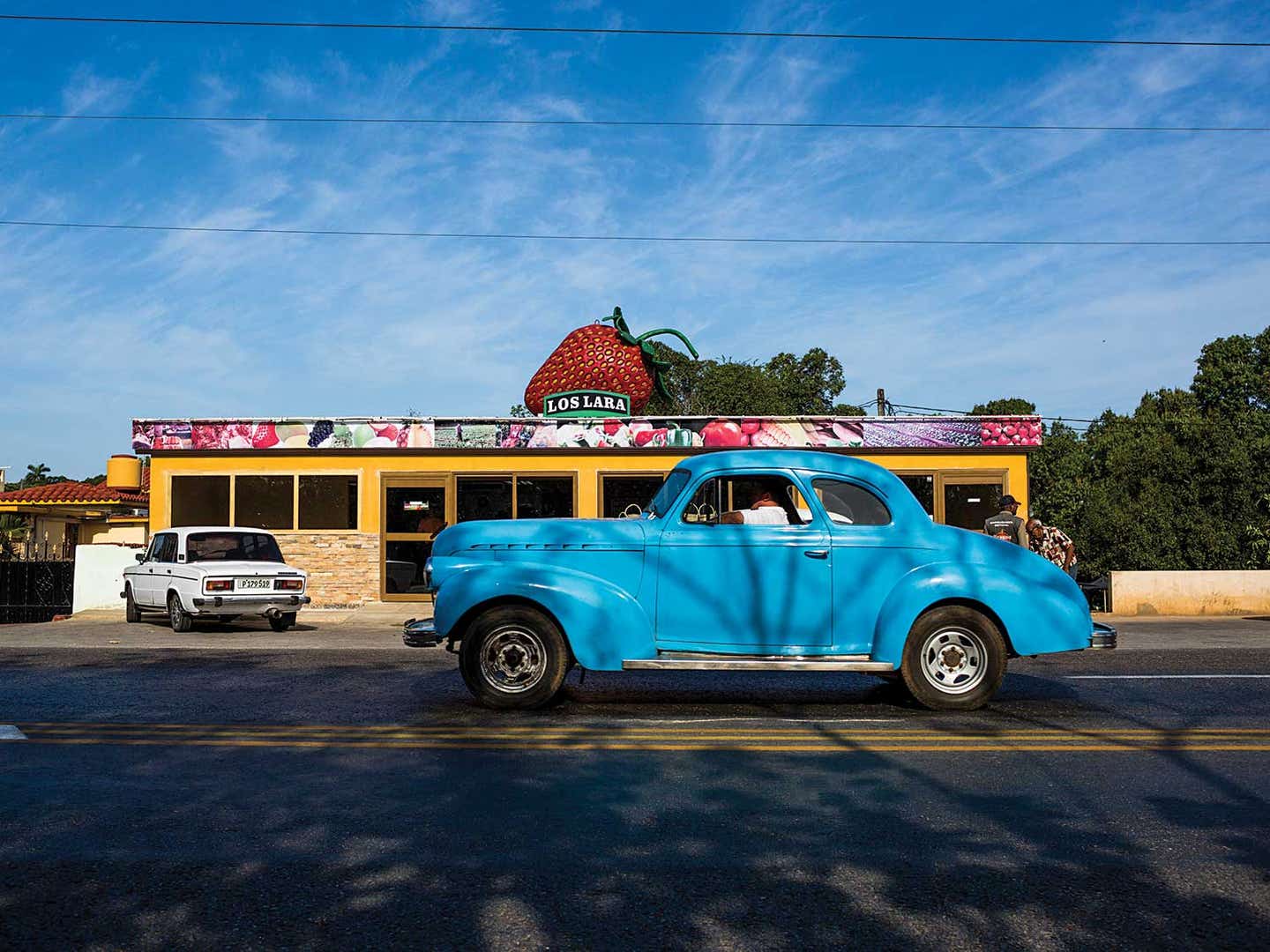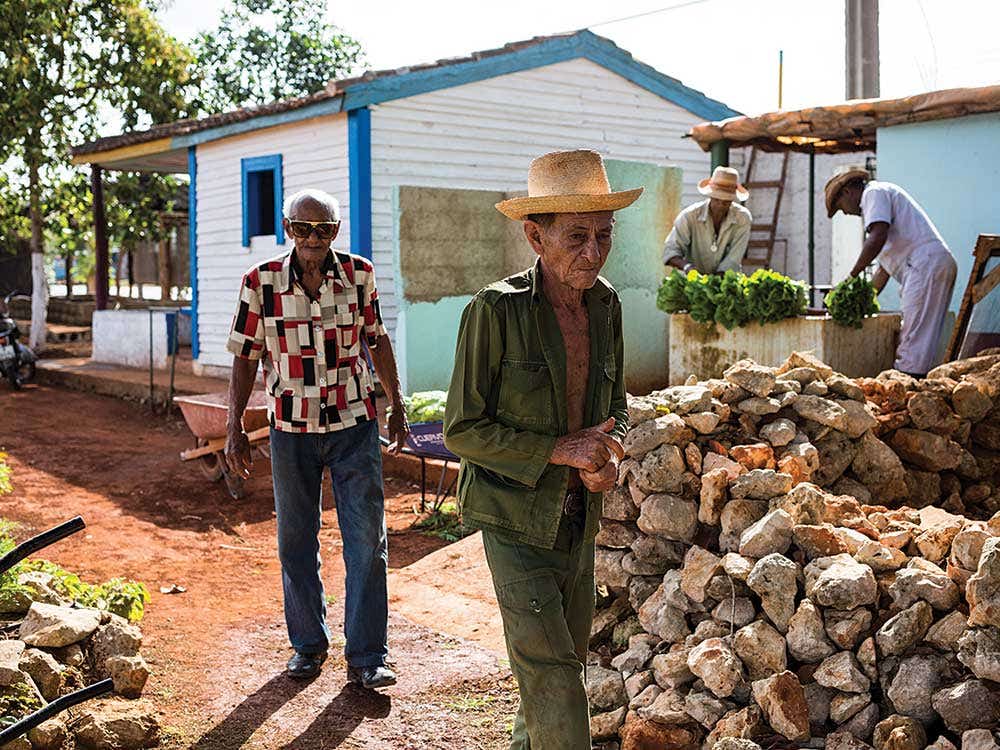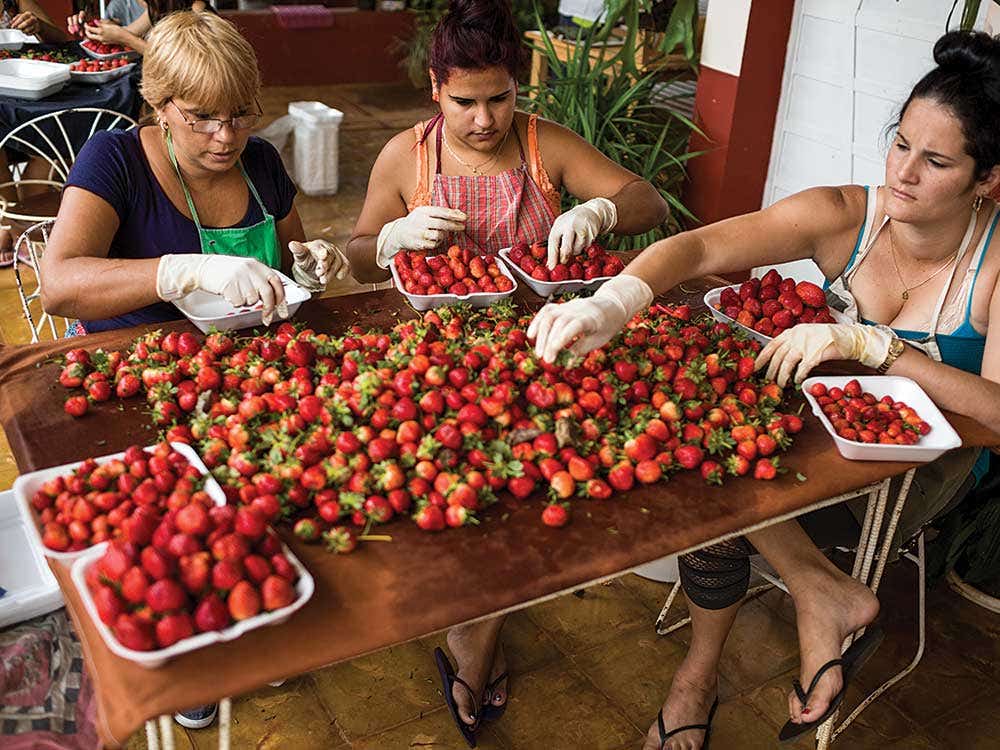
Ernesto Alpízar didn’t taste a strawberry until after the revolution, when he was 34 and living in Eastern Europe. As a kid in the 1930s, he recalls seeing the fruit from afar in Bauta, the rural village outside Havana where he grew up. A farmer there cultivated them exclusively for wealthy Cubans and expats. Like Coca-Cola and cars, the first strawberries had arrived from the United States in the early 1900s. But the plants didn’t fare well in the tropical climate and remained a rarity.
As a young man, Alpízar taught English in high school. After the revolution, he was given the opportunity to study abroad as part of a Castro-sponsored program to train citizens and reward supporters of the revolution. (Alpízar’s father, the head of a baker’s union, had backed the dictator.) Working in Romania, he was assigned by the Cuban government to cultivate fruits exotic to the Caribbean, including strawberries. At the time, Alpízar was more interested in grapes and winemaking. “I wanted to enjoy the outdoors, the fresh air, and eat to my heart’s content,” he says.

He returned to Cuba in the mid ’60s and grew strawberries on a collective farm in Banao, a mountainous valley of Sancti Spíritus. “I spent so much time with strawberries that I began to talk to them,” Alpízar says. “They were so delicate, they were like babies.” The higher elevation and cool microclimate was conducive to growing strawberries. But the breed—Mission—was too delicate, more akin to raspberries in size and texture, and the project lasted less than a decade.
“Strawberries will tell you when they’re sick,” he says. “If the petals fall, they need water; if the leaves have holes, bugs are bothering them.”
In 1972, the government tasked Alpízar with finding a firmer, more transportable variety. He spent two months traveling around Mexico with Cuban commerce officials, but found that many of the plants there were diseased. Hardier strains (notably the Parker strawberry) were grown in the U.S. To skirt the American embargo, officials made contact with a German-Chilean businessman connected to California growers. “With the embargo, I’m making tons of money,” the man told Alpízar. “Aside from drugs, I can get you anything.”
All Alpízar wanted were the strawberry plants. He arranged to meet the German-Chilean in Santiago and personally accompanied 80,000 of them—frozen, dormant, and bought for a quarter each—back to Cuba on a Russian Tupolev plane.
In San Antonio de los Baños, the small town where he now lives, Alpízar began cultivating them with the help of some 300 high school students. In an echo of the Cultural Revolution in China, Castro had begun sending thousands of students to live in rural boarding schools, where education was divided between the classroom and fields. Alpízar’s program produced enough fruit to supply Coppelia, Cuba’s hugely popular ice cream parlor. In the well-received 1993 Cuban film Fresa y Chocolate, set in the ’70s, fresa (strawberry) appeared as a daring alternative to mainstream and Communist chocolate.

As the Cuban economy went into a tailspin in the early 1990s, an era known as the período especial, government-mandated strawberry cultivation died out. By then, Alpízar had retired from a job at the Academy of Sciences and was living on a plot of land the government had awarded him. When the crisis hit, he and his family could no longer survive on his pension, so he began multiplying Parker plants and carrying the fruit to Havana to sell door-to-door.
At 89, he makes the two-hour journey to Havana—via a mix of horse carts, creaking buses, and rusty 1950s cars—several times a week during strawberry season. Most Cubans still don’t have access to strawberries. At $5 a pound they are an expensive luxury in a country where state employees earn about $25 a month. Few of Alpízar’s clients—mostly paladares, or private restaurants, and a small but growing affluent population—would recognize the retired agronomist as the Johnny Appleseed of the Cuban strawberry.
Even in his older age, Alpízar spends almost every morning working on the several-acre plot of land behind his apartment in San Antonio de los Baños. “Did you know that strawberries are in the rose family?” Alpízar asks no one in particular. “You wouldn’t think it, but they are. They really are beautiful things.”
Keep Reading
Continue to Next Story










